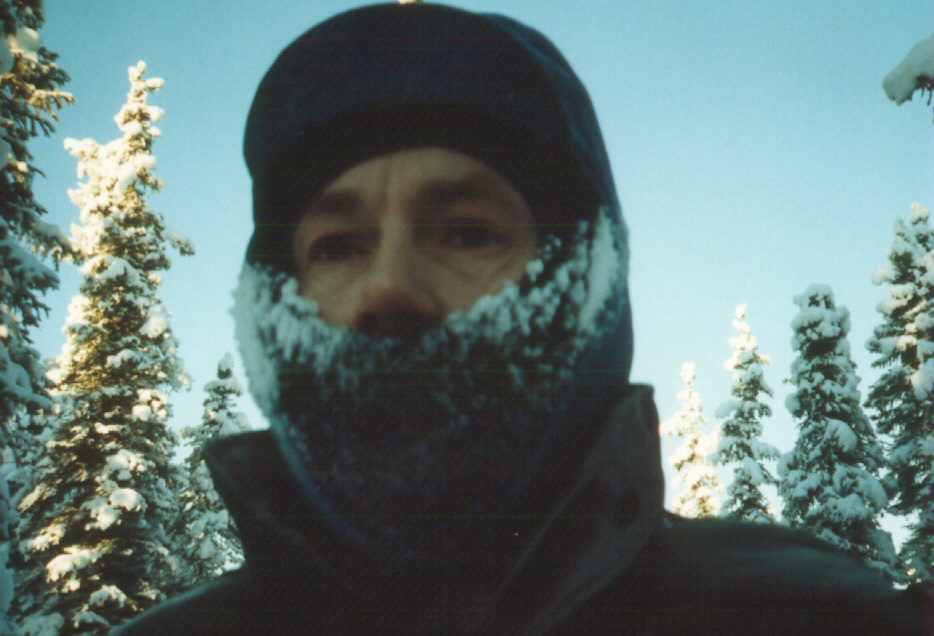
 |
Dog MusherDale Falk |
|---|---|
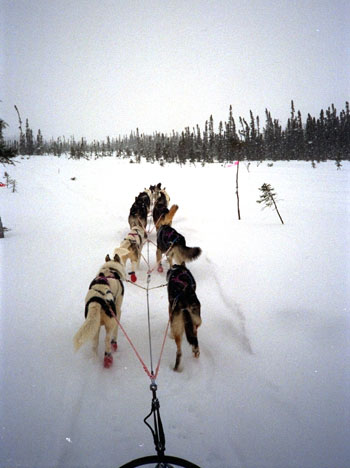 |
Dog mushing is a sport that requires strength and stamina and intense training to protect against the elements in a hostile environment. The Musher has to be in good shape, too! Here Dale and the team are on the outbound leg of an overnight training run on a portion of the trail used for the World Famous Iditarod Sled Dog Race, 1049 miles from Anchorage to Nome, Alaska. |
|---|---|
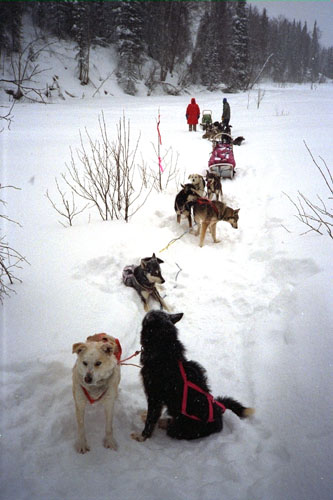 |
Iditarod-class sled dogs are world-class athletes. To achieve that level, the training is intense. But just like human athletes, in addition to the physical training, the dogs require adequate rest, nourishing, high quality food and water. The musher has to be alert to his dogs and recognize the sign of fatigue and stop the team for a rest before injuries occur. The musher stands on the back of the sled and has a foot brake. There are no reins. The dogs take their cue from the trail and the voice commands from the musher. Itís hike or mush to go, gee for right and haw for left. There are no whips, no spurs. The dogs have to want to run and if the dog decides to sit it out, there is no way you can make the dog run. It is a partnership that developes between the musher and his team. The dogs run and obey the commands for the musher and they in turn expect praise, contact like petting and grooming, medical care for their nicks and scratches and sore feet, and good food and water. Way out on the trail it is the musher and his team against the elements in an arctic wilderness. |
|---|---|
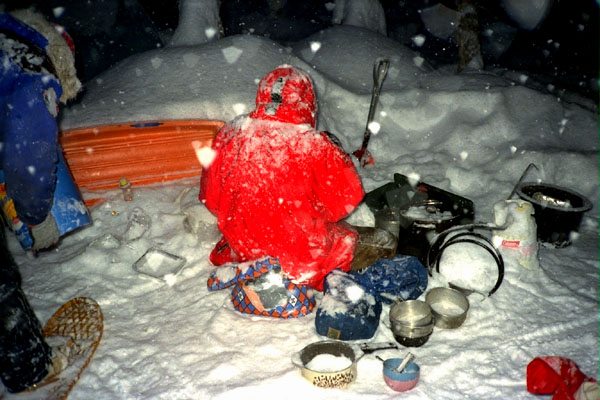
There is just no way around it. All of your food stuffs and the water to prepare it are frozen. Thatís just the way it is when its snowing and the ground and air temperature are below freezing. The dogs need water to replace moisture loss during exercise. You have to melt snow and ice to get the water. And as long as you are melting the water, make enough for them to drink and slake their thirst and more to hydrate their dry food.
There are trees and bushes about and firewood could be had. But, just try building a nice roaring fire on top of six-feet of snow. No! An open fire usually just wont do. The mushers use all-manner of alcohol and gas fueled stoves. Weight is at a premium in a sled dog race. The mushers all tinker and make some elaborate kits to get the lightest and most efficient stoves. Oh,and the musher gets to eat too, if he feels up to it, after the dogs are fed and tended to and bedded down.
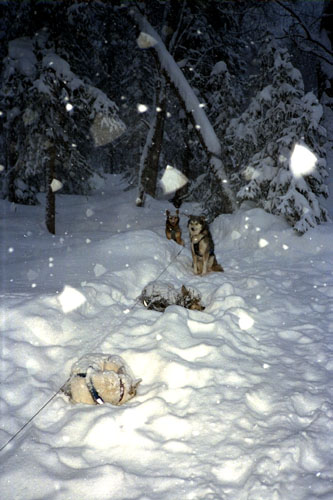 |
Sled dogs wear a harness and have a neck collar. The harness allows the dog to pull against the chest and shoulder muscles. That way the dog can pull without bone or muscle injury. The harness tapers towards the back and there is a connecting loop just behind the tail. The tug line, the short line attached to the longer gang line that pulls the sled, attaches to the loop. Whenever the tug line is attached, the dog can pull with all its strength. There is a short line called a neck line that connects to the gang line and the dogís collar. It is slack and its only use is to keep the dog aligned with the gang line. When you stop for an extended break, you either string up a cable with neck line clips or stake out the sled so the back of the sled is fixed in place and the front of the gang line is secured. The harness stays on the dog. (If you took it off, it would freeze solid and you couldnít get it back on the next day.) You disconnect the tug line but leave the neck line attached to keep the dogs from wandering off. Sled dogs have double layer coats. There is a coarse outer layer of guard hairs and an inner layer of thick, soft hair. With that double coat, the sled dog is quite comfortable sleeping overnight in a snowdrift. The dogs usually curl up with their feet under them. This keeps the feet warm and safe. If the feet are sore or bruised from the trail, the dog may stick them out and not protect them under its body. The feet can freeze! It is the mushers responsibility to put booties on the feet, apply balms and ointements and ensure the feet are well cared for. |
|---|---|

Sonny, front, and Dillon, rear, settle down for a good nights sleep after a hearty meal. The nightís snow will leave a pristine trail for the return leg tomorrow
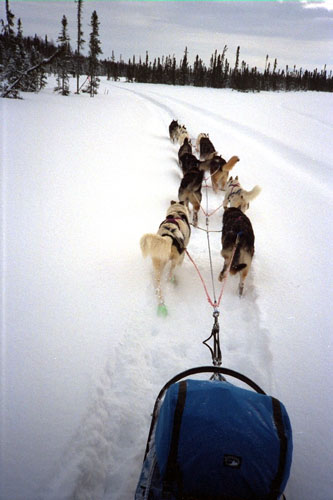 |
On a beautiful day after a snowfall, the team and their musher head home from a practice run on a portion of the classic Iditarod Trail. It always seems to amaze the first-timer how quiet it is on the trail. The dogs eagerly lean into their harness and pull the sled. There is no barking, yelping or clamor. There is the oocasional, "Good dogs!" from the musher. Otherwise, there is just the swish of the sled runners on the snow, their rhythmic panting, and the patter of many well-tended doggy feet. |
|---|---|